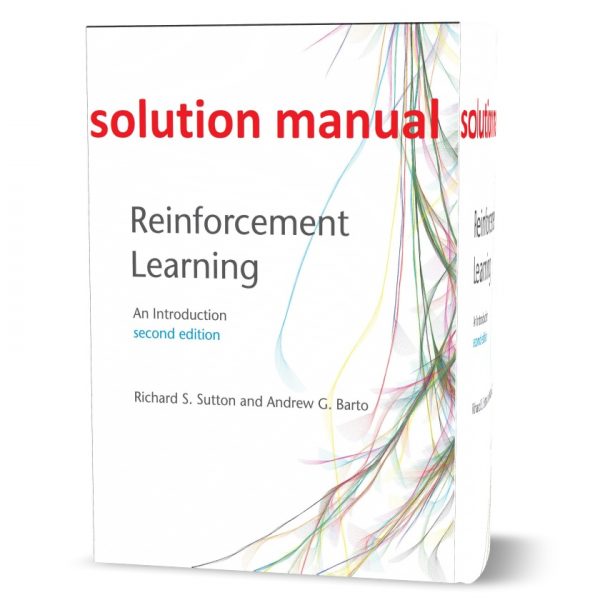Reinforcement Learning An Introduction Richard Sutton & Andrew Barto 2nd edition solution manual
Original price was: $38.00.$30.00Current price is: $30.00.
Published: Bradford Books 2018
Edition: 2nd
Pages: 54
Type: pdf
Size: 1 MB
Content: includes all chapters of the textbook (1 to 17). There are no answers for chapter 14.
Sample: Solution sample file
Download After Payment
- Description
- Reviews (0)
Description
Description
Download Free Reinforcement Learning An Introduction Richard Sutton & Andrew Barto 2nd edition solution manual pdf ( solutions ) We first came to focus on what is now known as reinforcement learning in late 1979. We were both at the University of Massachusetts, working on one of the earliest projects to revive the idea that networks of neuronlike adaptive elements might prove to be a promising approach to artificial adaptive intelligence. The project explored the “heterostatic theory of adaptive systems” developed by A. Harry Klopf. Harry’s work was a rich source of ideas, and we were permitted to explore them critically and compare them with the long history of prior work in adaptive systems. for more solution manual click here.
Reinforcement Learning An Introduction Richard Sutton & Andrew Barto 2nd edition solution manual
Our task became one of teasing the ideas apart and understanding their relationships and relative importance. This continues today, but in 1979 we came to realize that perhaps the simplest of the ideas, which had long been taken for granted, had received surprisingly little attention from a computational perspective. This was simply the idea of a learning system that wants something, that adapts its behavior in order to maximize a special signal from its environment. This was the idea of a “hedonistic” learning system, or, as we would say now, the idea of reinforcement learning Like others, we had a sense that reinforcement learning had been thoroughly explored in the early days of cybernetics and artificial intelligence.
Download Free Reinforcement Learning An Introduction Richard Sutton & Andrew Barto 2nd edition solution manual pdf ( solutions ) On closer inspection, though, we found that it had been explored only slightly.While reinforcement learning had clearly motivated some of the earliest computational studies of learning, most of these researchers had gone on to other things, such as pattern classification, supervised learning, and adaptive control, or they had abandoned the study of learning altogether. As a result, the special issues involved in learning how to get something from the environment received relatively little attention.
In retrospect
focusing on this idea was the critical step that set this branch of research in motion. Little progress could be made in the computational study of reinforcement learning until it was recognized that such a fundamental idea had not yet been thoroughly explored.
The field has come a long way since then, evolving and maturing in several directions. Reinforcement learning has gradually become one of the most active research areas in machine learning, artificial intelligence, and neural network research. The field has developed strong mathematical foundations and impressive applications. The computational study of reinforcement learning is now a large field, with hundreds of active researchers around the world in diverse disciplines such as psychology, control theory, artificial intelligence, and neuroscience.
Particularly important have been the contributions establishing and developing the relationships to the theory of optimal control and dynamic programming. The overall problem of learning from interaction to achieve goals is still far from being solved, but our understanding of it has improved significantly. We can now place component ideas, such as temporal-difference learning, dynamic programming, and function approximation, within a coherent perspective with respect to the overall problem.




Reviews
There are no reviews yet.